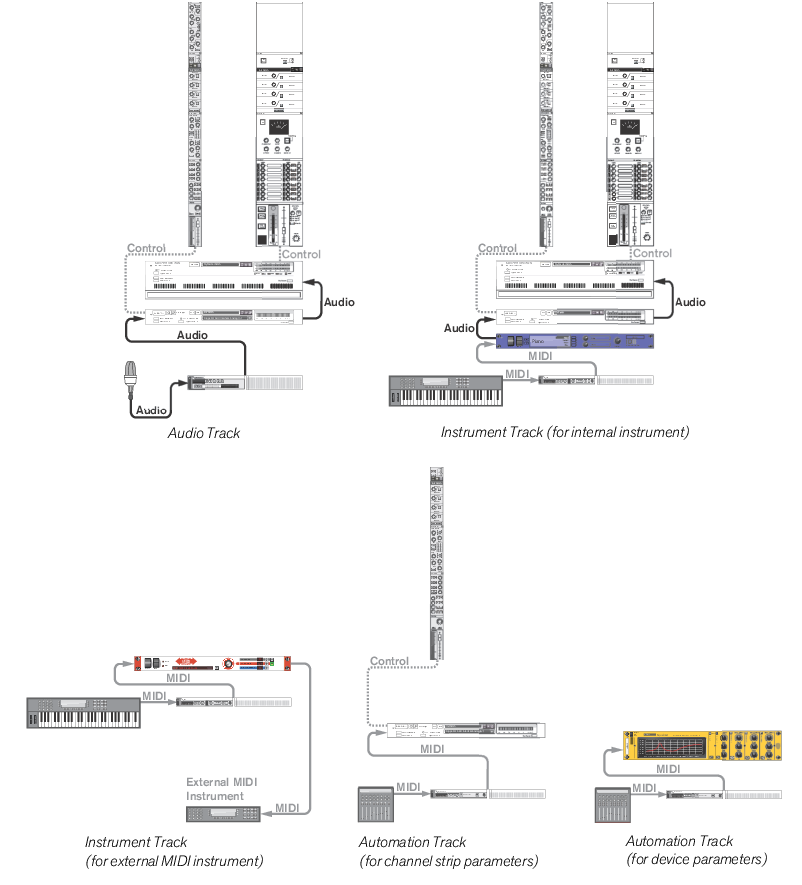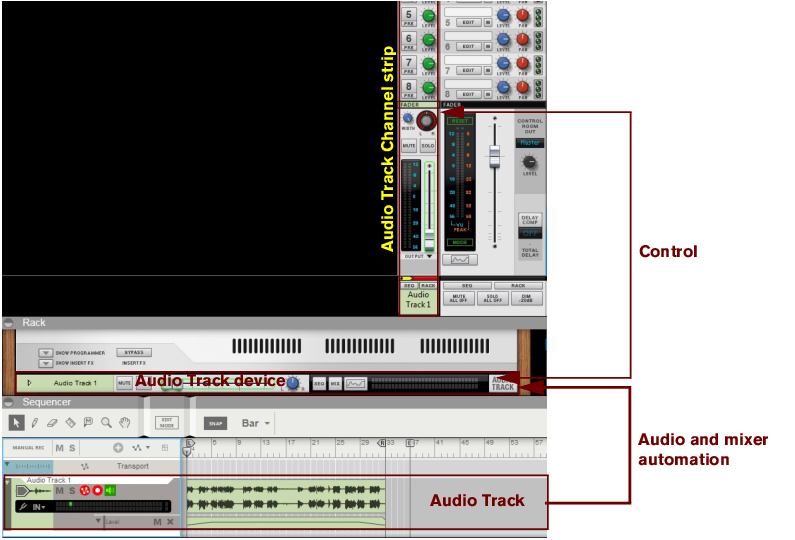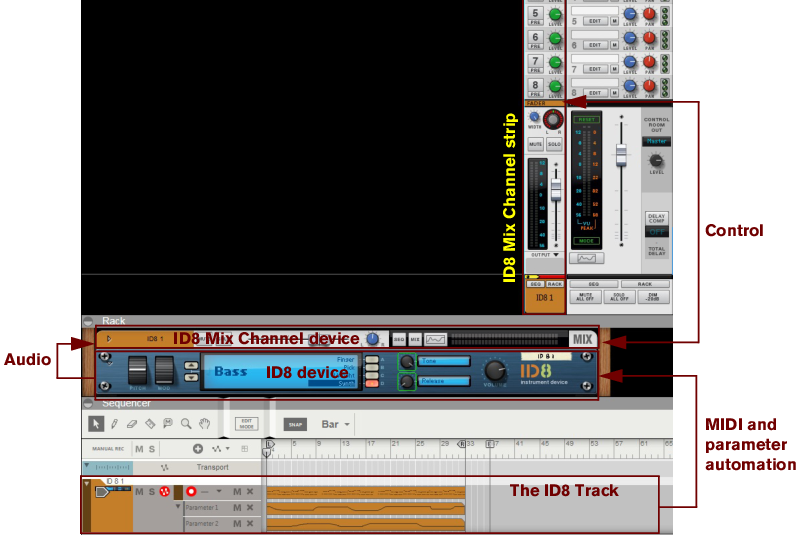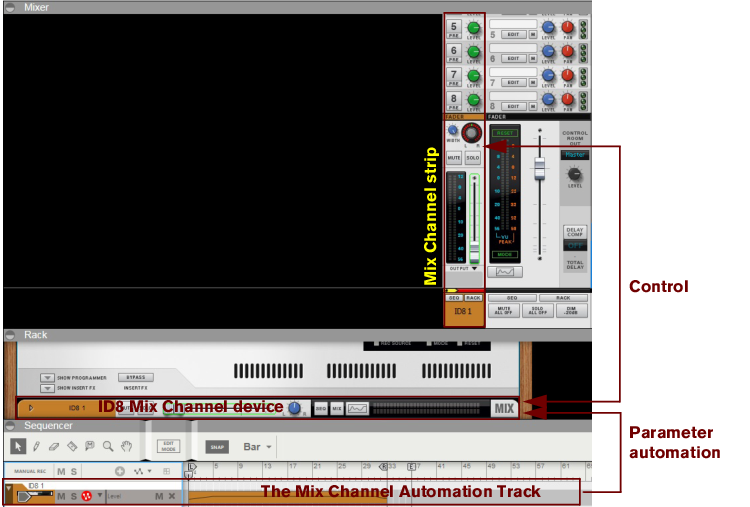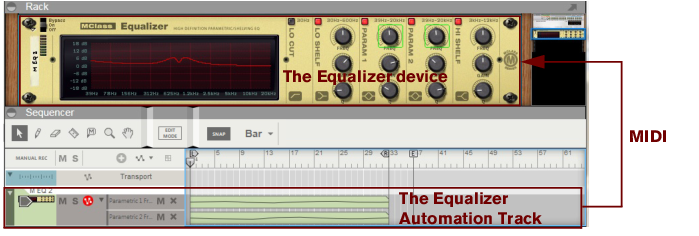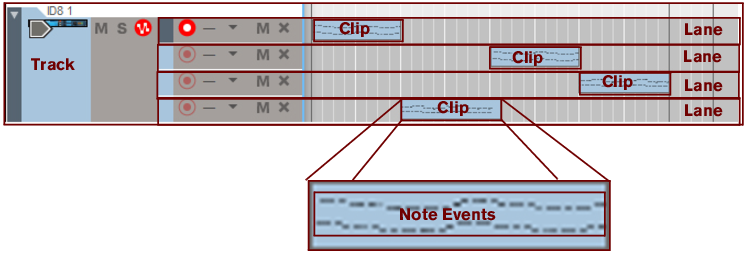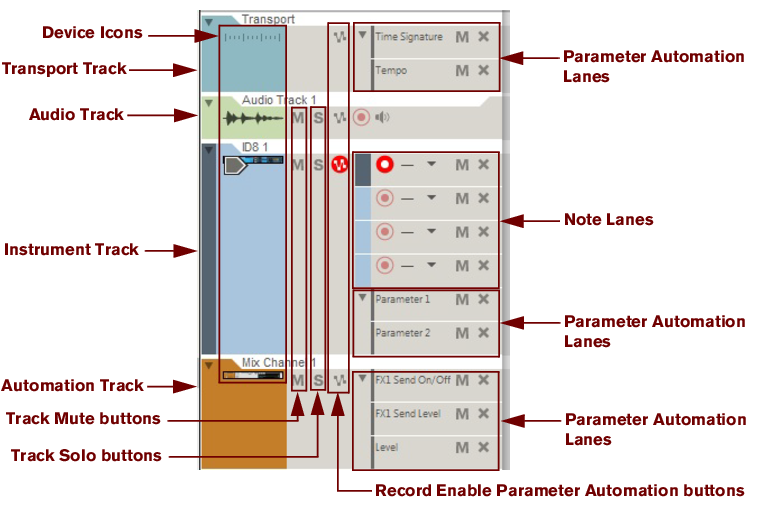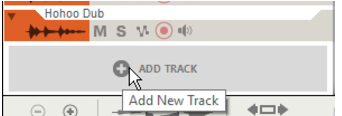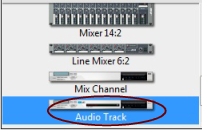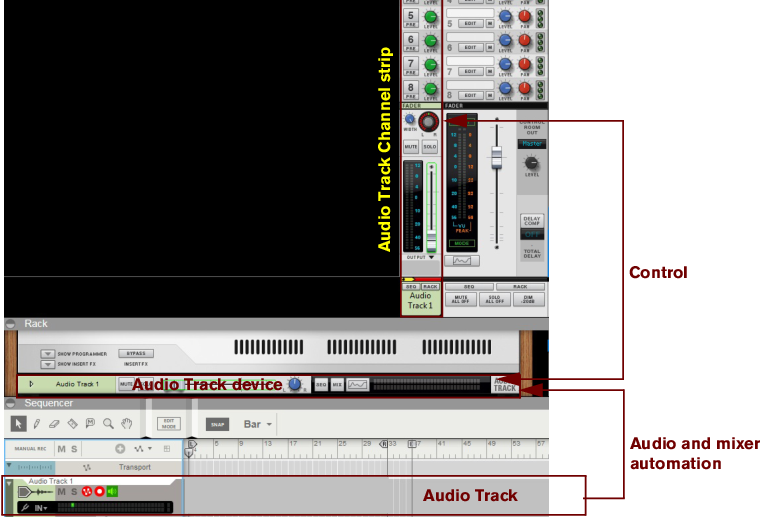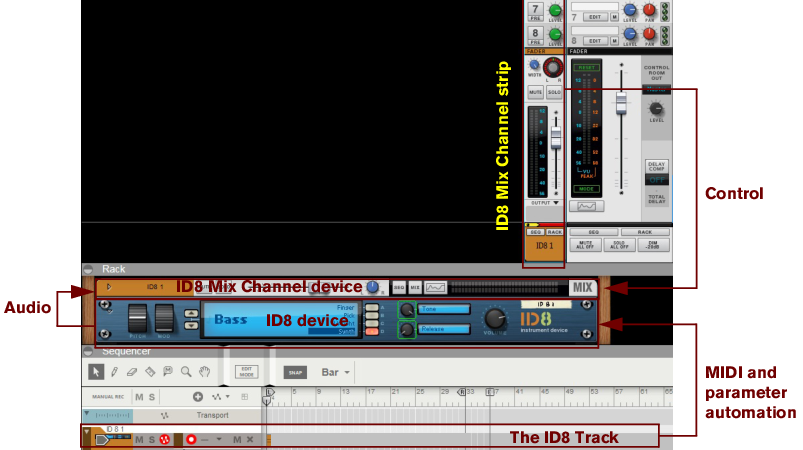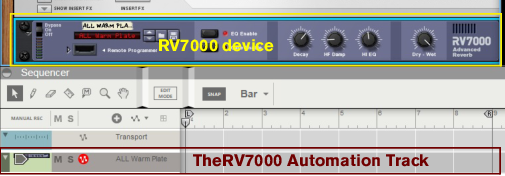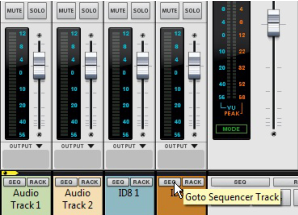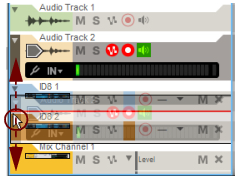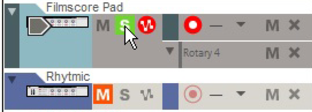Note that when you create an instrument, the connected Mix Channel device doesn’t automatically get a track in the sequencer. If you want to record Mixer Channel automation, you have to first create a separate sequencer track for the Mix Channel device. See “Automation (non-instrument) track relationships”.
If you want to control an external MIDI instrument from the Reason sequencer you have to use the External MIDI Instrument device (“External MIDI Instrument”). The device works as a MIDI router in which you can define which MIDI Out Port and MIDI Channel you want the MIDI signals to be sent to from Reason. Since there is no internal audio involved in this setup, there is no Audio Track device or Mix Channel device present in the configuration.
A pure automation track is always associated with a “non-instrument” device, i.e. a device which can’t receive MIDI Note information. Consequently, an automation track can only consist of parameter automation lanes. Examples of non-instrument devices are Mix Channel devices with their corresponding Mix Channel strips, effect devices, mixer devices and Spider Merger & Splitter devices. The picture below shows an example with an automated Mix Channel:
The standard way of routing MIDI from a connected MIDI master keyboard or control surface to a device in the rack is to set the Master Keyboard Input in the sequencer. When MIDI is routed to a selected track in the sequencer, the notes and controller data are automatically echoed to the associated device in the rack. However, it is also possible to set Master Keyboard Input from the rack, see “Playing devices from the rack”.
By locking additional MIDI keyboards to separate devices in the rack, you will be able to play and record on several sequencer tracks simultaneously, see “Locking a surface”.
Besides the standard routing described above, it’s also possible to lock certain rack devices to specific control surfaces. See “Locking a surface” for more details.
It’s also possible to set Master Keyboard Input and track selection independently from each other by selecting “Separated” on the “Keyboards and Control Surfaces” page in Preferences - see “Preferences – Control Surfaces”.
|
•
|
Only one track at a time can have Master Keyboard Input. However, if you have locked additional MIDI keyboards to specific devices in the rack via Remote (see “Locking a surface”), you will be able to play and record these together with the track that has Master Keyboard Input.
|
The Blocks track is present at the top of the Track List only when the Enable Blocks function on the Options menu is on. On the Blocks track you can create Block Automation clips to decide which Blocks should play back. Refer to “Working with Blocks in the Sequencer” for more information about the Blocks feature.
The Transport track is always present at the top of the Track List and cannot be moved or deleted. The Transport Track can have a maximum of two lanes: one containing time signature automation, and the other containing tempo automation. See “Automating time signature” and “Editing tempo automation” for more details.
An audio track can only have a single audio lane containing clips with mono or stereo audio recordings. However, each audio clip can contain several recordings, i.e. different "takes". You can view and comp these takes in the Comp Editor. See “Audio Editing in the Sequencer” for more details. An audio track can also have parameter automation lanes containing automation for the Audio Track Channel strip parameters in the Main Mixer.
By default, the audio track is set up in mono. You can easily change to stereo by selecting “Stereo Input” in the “Audio Input” drop-down list - see “Selecting audio input(s) and defining mono or stereo”. If you select “Stereo Input”, the Audio Track channel strip in the Main Mixer automatically switches to a stereo channel.
|
|
An External MIDI Instrument device is created in the rack and the associated track is automatically created in the sequencer. See “External MIDI Instrument” for more details on how to configure the External MIDI Instrument device for controlling external MIDI instruments.
For non-instrument devices, such as effects devices and Mix Channel devices, you need to manually create a track if you want to record parameter automation. You can do that either by following the description below or by following either of the two last descriptions in “Creating/adding parameter automation lanes”.
|
2.
|
See “About Device Groups” for information about device groups.
|
•
|
See “About Device Groups” for more information about device groups.
The tracks will be deleted without an alert but you can always use the Undo function. See “Undo and Redo”.
If you have deleted a track for a device and want to create a new track for the device, follow the descriptions in “Creating a parameter automation track for a non-instrument device” or “Short-cut for creating a Mix Channel track or Audio track”.
See “About Device Groups” for more information about device groups.
|
|
The track color is shown in the track background in the Track List. The associated Audio Track device or Mix Channel device in the rack and its corresponding channel strip in the Main Mixer will also be assigned the new color. The selected track color will be reflected in all new clips you record or draw on this track.
|
|
See “About Device Groups” for more information about device groups.
|
|
|
|
|
|
|
|

